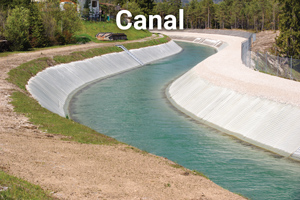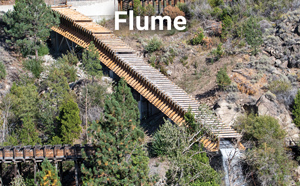Water Safety
Reservoir and River Safety
PG&E’s hydropower system includes over 100 reservoirs, many of which have areas for swimming, boating and fishing. While enjoying water sports in these reservoirs or anywhere else, always follow these safety tips:
- Obey warning signs and restrictive buoys when swimming or boating.
- Swim only in marked areas, and NEVER swim alone.
- Check the water before you go in—it might be colder than you expect.
- Don’t dive or jump into unfamiliar water: shallow water or submerged trees or rocks could cause serious injury.
- Be alert for swift flows that can create dangerous currents.
- Always wear your lifejacket when boating.
- Know your family’s signal to get out of the water at a moment’s notice.
Beware of Changing Water Levels
Heavy rains, melting snows, or the sudden startup of electric hydropower generators around hydro facilities can change a river from a slow stream to a raging river in just minutes. The resulting release of water can cause an unexpected and sudden increase of water levels in rivers and reservoirs.
When you are visiting hydro system areas, be aware of your surroundings at all times.
Listen and watch for these signs of rising water levels:
- Increasing sounds of rushing water.
- Previously exposed rocks, sticks, and brush that are suddenly covered with water.
- Water flowing faster or deeper.
- Increasing debris in the water.
- Changed appearance of water from clear to muddy.
- Colder than expected water temperatures—even on the warmest days.
- Warning lights and sirens coming from a powerhouse.
If you notice any of these warning signs, get out of the water and/or move far from the water’s edge immediately. Remember that extra water can temporarily flood roads and trails.

Canals and Flumes
Hydropower facilities may include canals and flumes. Canals and flumes are both designed to move vast amounts of water quickly; they are not for swimming or other types of water recreation and can be dangerous. Never enter a canal or flume for any reason (and don’t allow your pets to either). The water can be icy cold and swift, and the walls can be steep and slippery, making it hard to get out. There can also be underwater traps and fallen debris within. Use the following tips to stay safe:

- Obey all warning signs
- Never play or swim on, near, or in a canal or flume, even if it appears calm
- If you drop a personal article in a canal or flume, leave it. Retrieving it is not worth the risk.
Water Emergency!
If you are swept off your feet or trapped in rising waters:
- Keep your head above the water.
- Remove your shoes and drop any items that could weigh you down.
- If you are near a boat, stay with it.
- If you are in a waterway, get to the side and cling to a ledge, crack, or branch until help arrives. If you cannot find one, reach for the branches of an overhanging tree.
- If you cannot get to the side, stay calm and take the following steps:
- Float downstream on your back.
- Keep your feet up and pointed downstream to avoid hitting rocks.
- Move diagonally across the current until you reach shore, then roll onto dry land.

